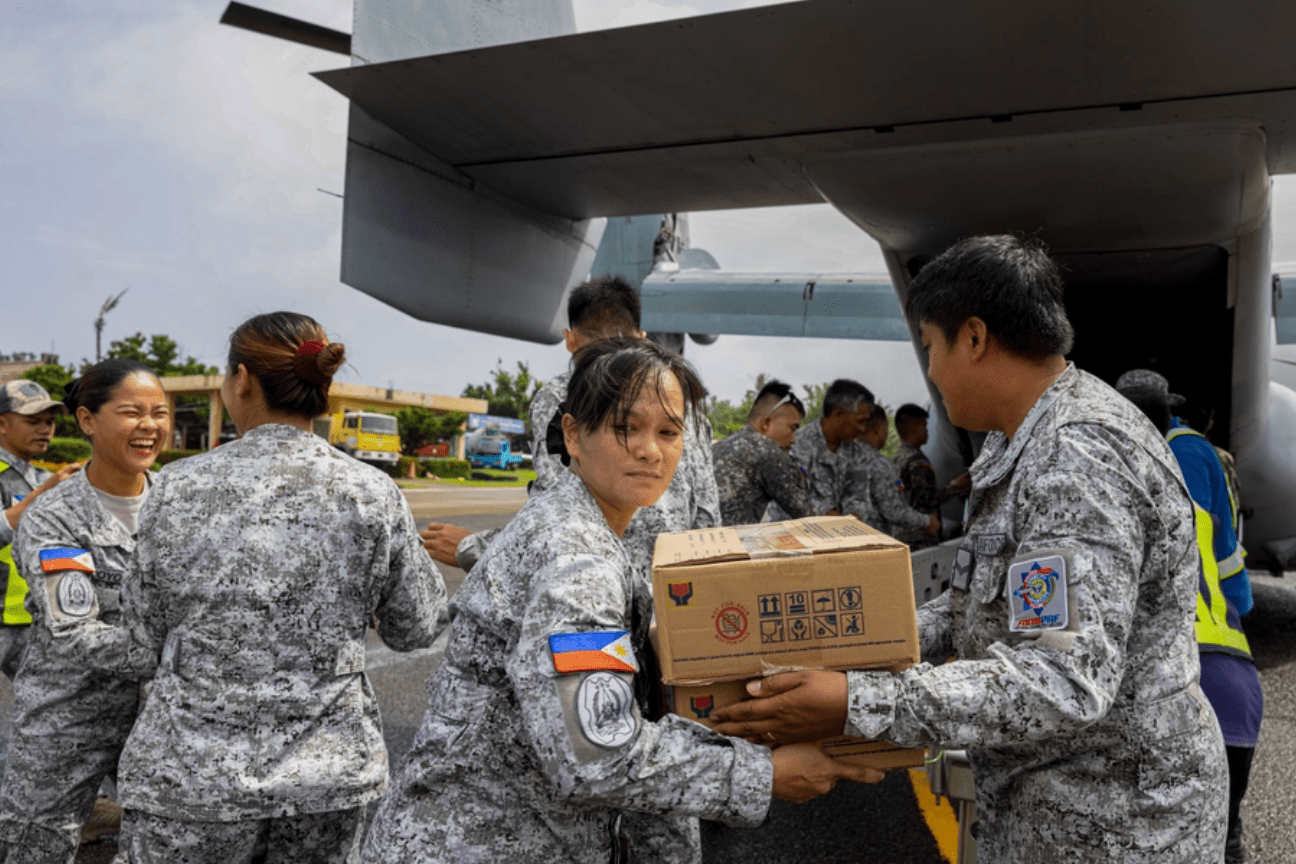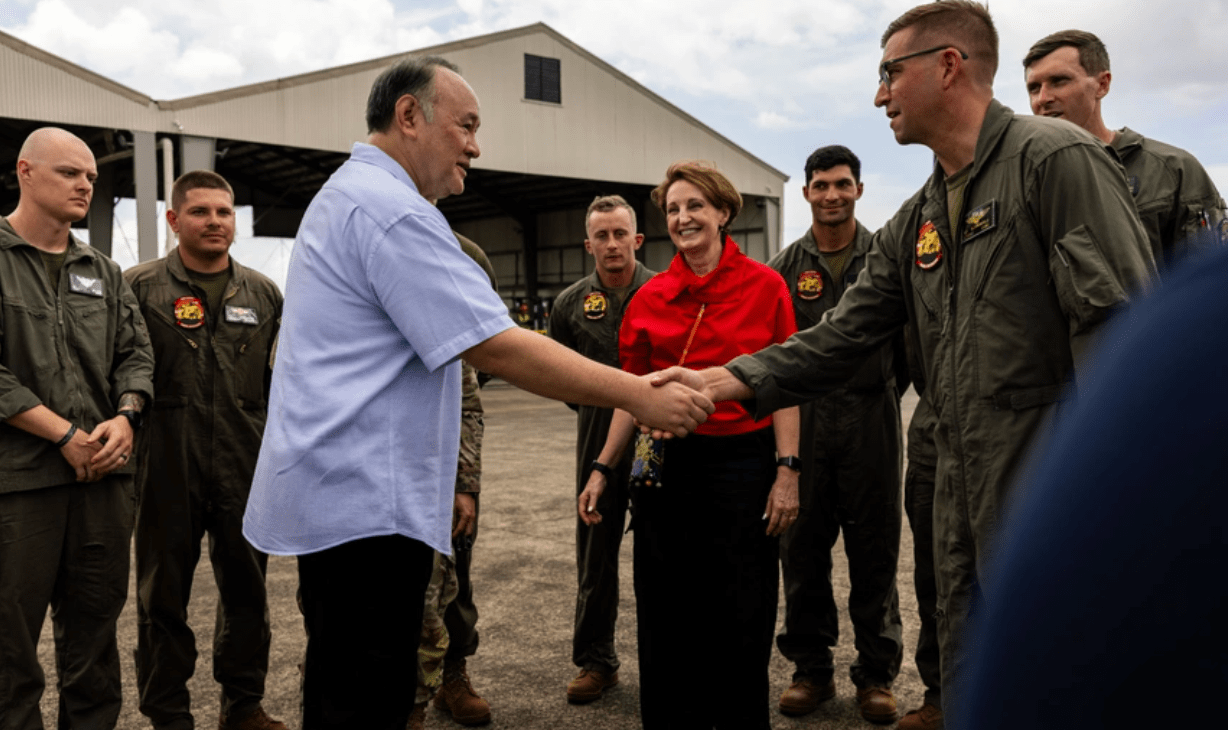US Marines shift from Talisman Sabre to disaster relief in Philippines after back-to-back storms
At the conclusion of Exercise Talisman Sabre 25, the Indo-Pacific’s largest combined military exercise with over 40,000 troops, U.S. Marines from the Marine Rotational Force–Darwin (MRF-D) 25.3 rapidly shifted from large-scale training to real-world disaster relief operations in the Philippines.
The sudden transition followed an urgent request from the Philippine government after back-to-back tropical storms and a stronger southwest monsoon caused landslides, flooding, and severe infrastructure damage across Central and Northern Luzon. The isolated province of Batanes, cut off from supplies, became a critical priority.

From training to humanitarian aid
Instead of winding down after months of exercises across northern Australia, MRF-D surged command and control elements forward to the Philippines. Four MV-22B Ospreys from Marine Medium Tiltrotor Squadron (VMM) 363 and KC-130J Super Hercules aircraft from Marine Aerial Refueler Transport Squadron (VMGR) 153 were quickly redeployed to Clark Air Base to support airlift operations.
Their mission: transport more than 6,300 family food packs to Batanes, each containing rice, canned goods, and other essentials. The combined effort used MV-22B and CV-22 Ospreys, along with Philippine Air Force MC-130 aircraft, to deliver aid directly to the islands’ short runways.
To sustain operations, Enhanced Defense Cooperation Agreement (EDCA) infrastructure such as Lal-lo Airport in Cagayan province served as a vital refueling and staging point. This expanded the reach of relief flights, allowing uninterrupted aid delivery.
US-Philippines teamwork in action
The relief mission highlighted whole-of-government cooperation. The Armed Forces of the Philippines, U.S. military, Department of State, Office of Civil Defense, Department of Social Welfare and Development, and World Food Programme all played key roles.
U.S. Ambassador MaryKay Carlson reaffirmed Washington’s commitment, stating: “The United States stands shoulder to shoulder with our Filipino allies, especially in responding to disasters.”
Ultimately, the U.S.-Philippine response force delivered all 6,300 food packs to Batanes and contributed to a broader nationwide effort that provided nearly 48,000 family packs to more than 200,000 people, along with shelter and hygiene kits for thousands of affected families.

Following the humanitarian mission, MRF-D forces seamlessly transitioned to Exercise Alon, an Australian-Philippine led amphibious training with U.S. and Canadian participation. The sequence — from training, to disaster relief, and back to high-end operations — underscored the operational agility of allied forces in the Indo-Pacific.
“This rotation is built for exactly this kind of challenge,” said Col. Jason Armas, commanding officer of the MRF-D 25.3 MAGTF. “Our Marines and Sailors proved that no matter the mission, we can adapt in an instant — shifting from training to real-world operations with purpose, precision, and unity of effort.”



